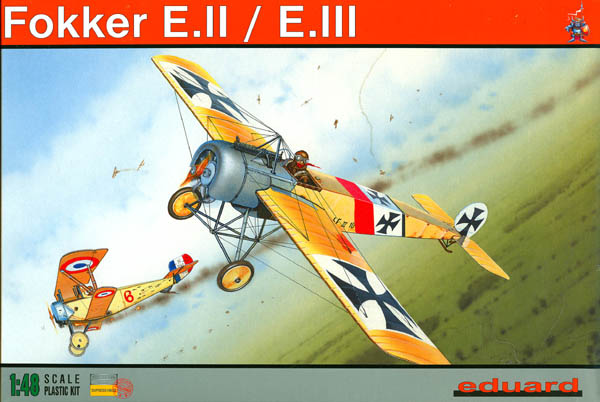
Eduard 1/48 Fokker E.II/E.III Eindecker
By Jim Schubert
History
The first reference, below, has a very good pre-history of the Fokker Eindecker (Monoplane) series; the E. I, E. II, E. III and E. IV. The Militar M.5 (E. I), successor to four very poor designs, Spinne (Spider) 1 through 4 (M.I – M. 4), was, essentially, a major Fokker redesign of the Morane-Saulnier Type H. It was strong, maneuverable and relatively easy to fly well and was received with great enthusiasm by the German Military Air Service. These airplanes used French designed Gnome Monosoupape (single valve) rotary engines built under license in Germany by Oberursel Moteren Gesellschaft. The Fokker Eindeckers started with the seven cylinder 50 hp rotary and by the end of production were using the 14 cylinder, twin-row Oberursel of 160 hp in the M. 15 (E. IV).
Following capture of Roland Garros' Morane-Saulnier Type L with bullet deflectors on the propeller to permit a fixed gun on the centerline of the plane to fire through the propeller, the Germans went to work. Without getting into the debate over who was first with the idea of a mechanism to synchronize the firing of the gun with the passage of the propeller in front of it, it will suffice to say Fokker was the first to deliver working hardware installed on a standard E. I. Thus began the days of the “Fokker Scourge”, which made “Fokker Fodder” of Allied types.
The E.I, II, III and IV followed one after the other with the E. III being produced in the greatest numbers. The most concise and readable history of the genesis of the first modern fighter is set out in Squadron Signal's Fokker Eindecker, No. 158 in their In Action series. The myriad references in WWI Aero quarterly are much more thorough and satisfying to detail addicts.
The Kit
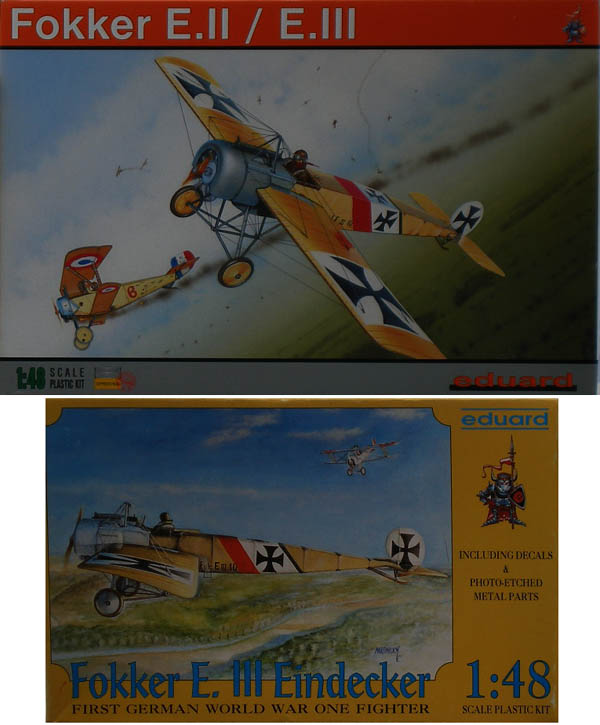
|
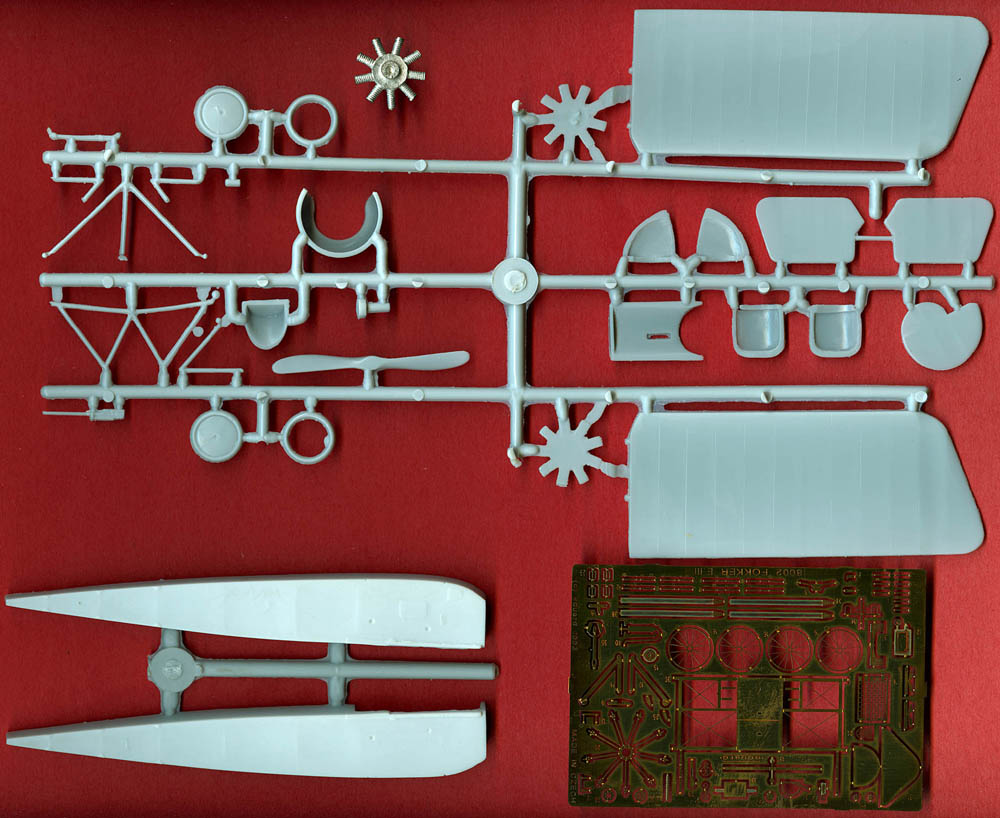
Original kit parts
|
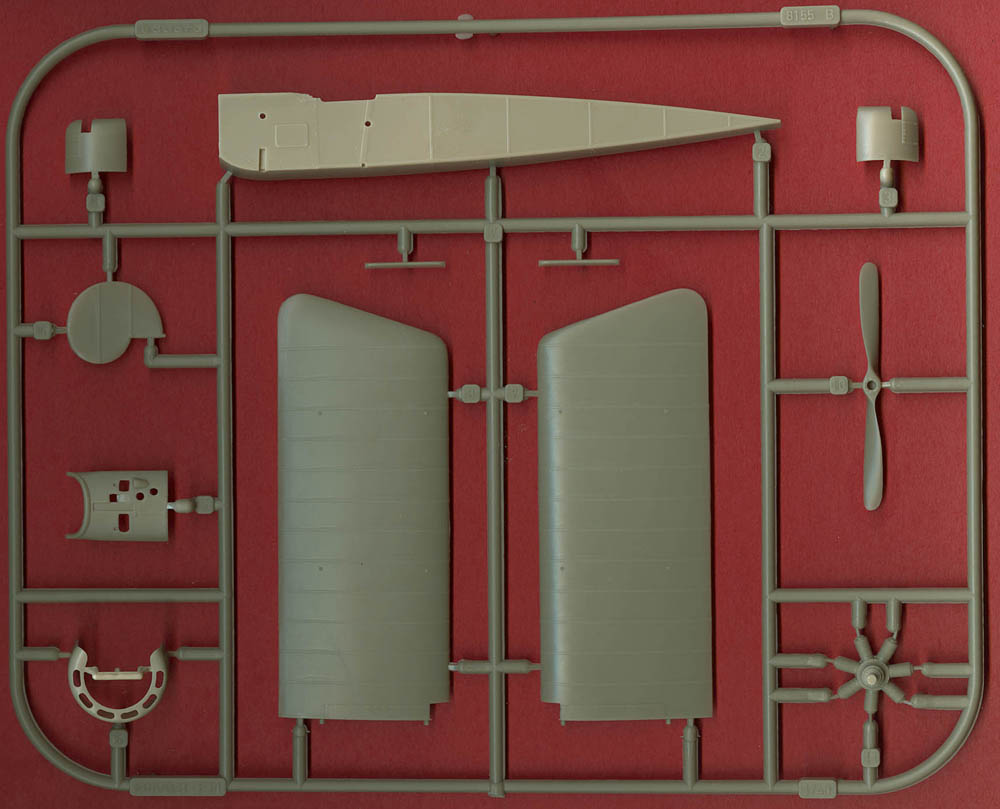
|
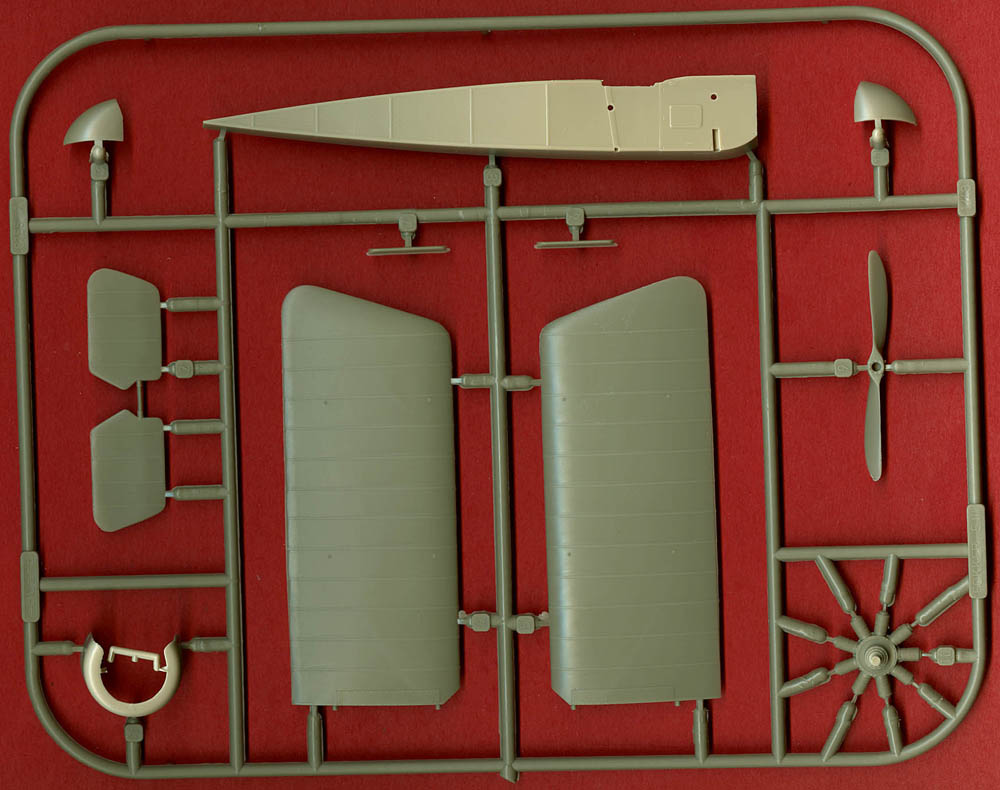
|
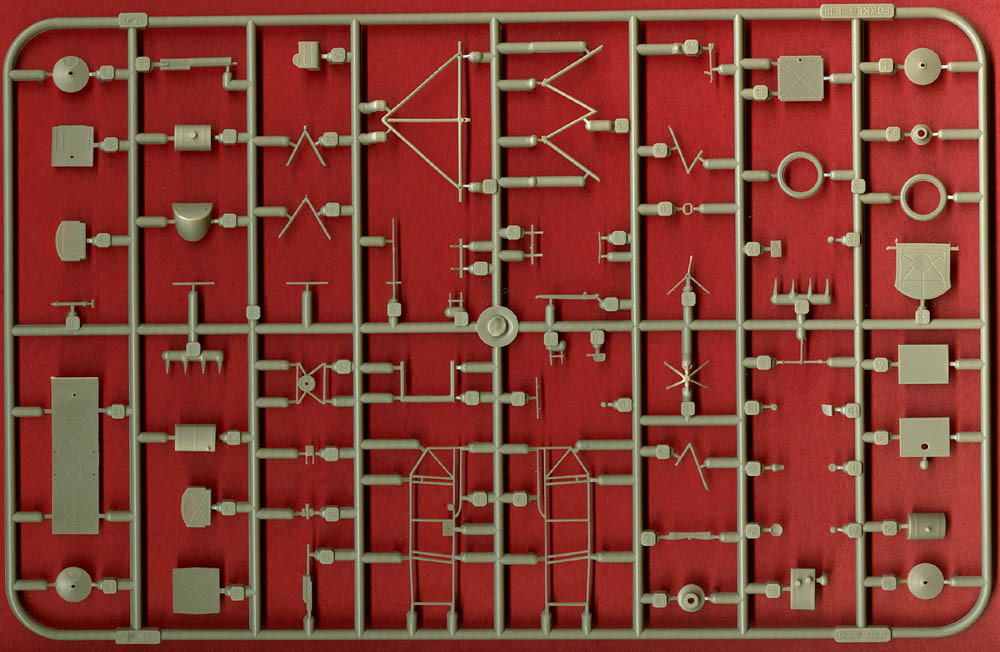
|
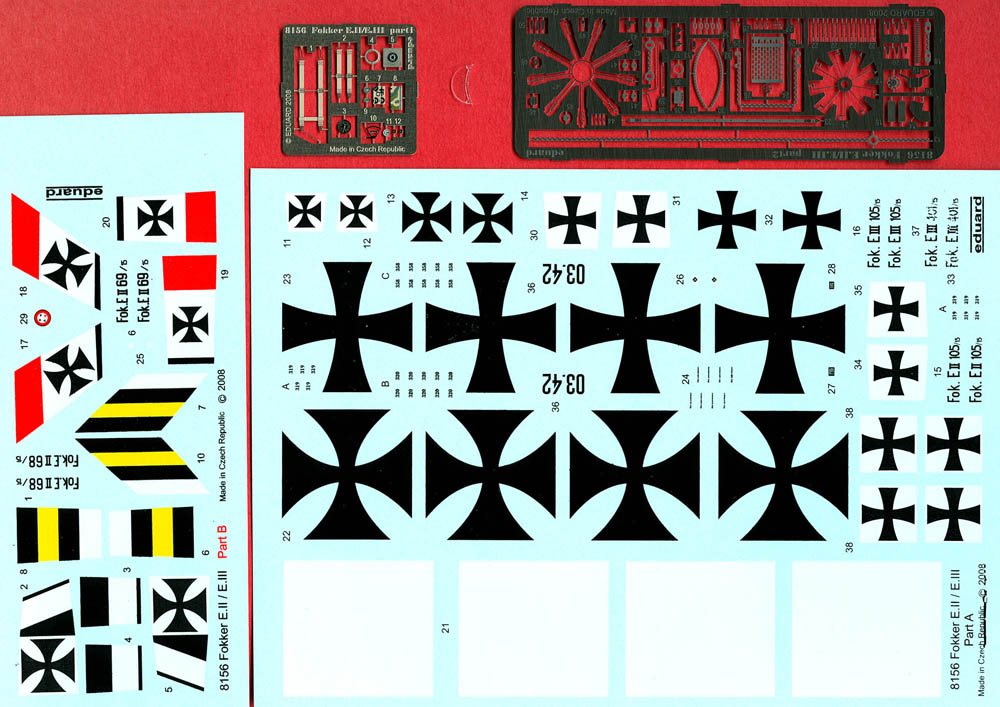
|
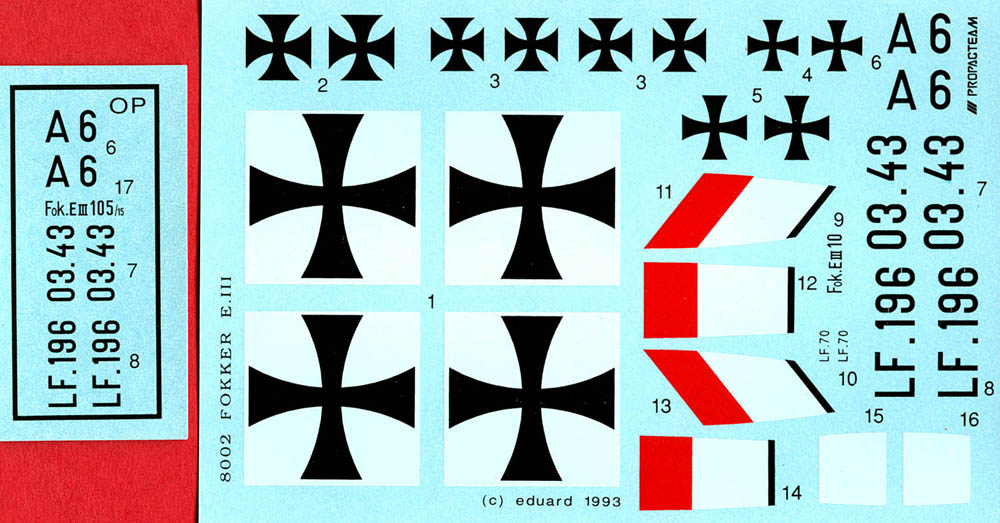
original issue decals
|
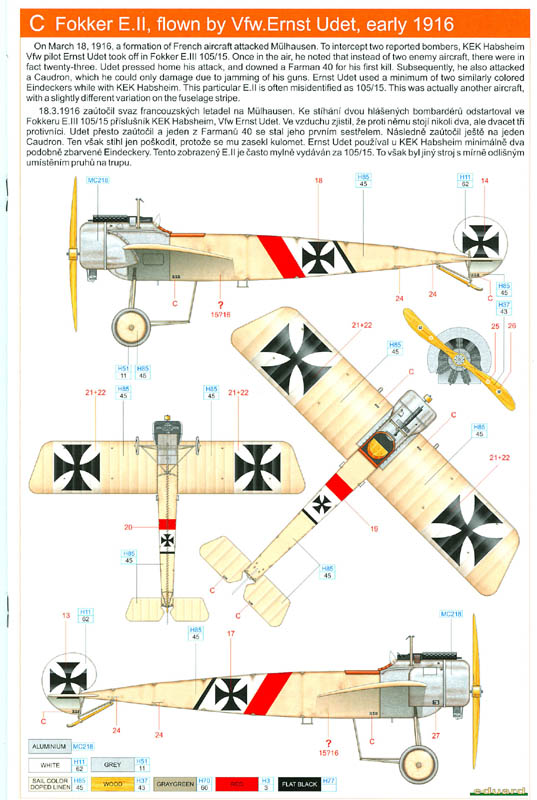
|
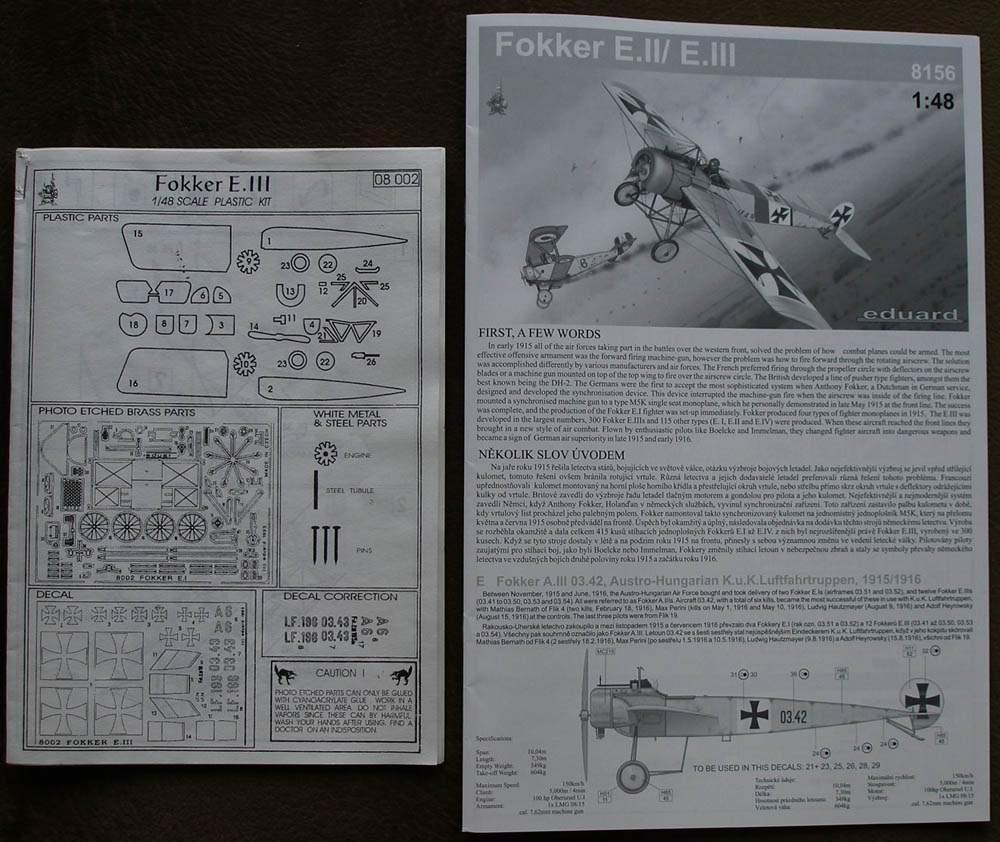
|
Back in 1994 (15 years ago!) Eduard released a 1/48 scale kit, No. 8002, of the Fokker E. III Eindecker. If recollection serves, I believe this was their first all-injection molded kit. For that time it was an outstandingly good kit and included an optional white-metal engine and a sheet of photo-etched brass detail parts and decals for three different planes.
This original kit, while good, pales in comparison with the new kit. The old kit has 29 parts softly molded in a pale gray styrene with some flash, a white metal engine and 40 detail parts in PE. The small format black and white instruction booklet comprises 12 pages.
The new kit has 89 parts crisply molded in a pale tan styrene free of flash, one clear windscreen, 12 pre-painted steel PE parts, 50 unpainted steel PE parts, a pair of small painting masks and markings for five planes; three E. IIs, one E. III and an Austrian A. III. As is common with current Eduard kits the colors and markings instructions, save for the A. III, are in full color. The instruction booklet comprises 12 large format pages. Both kits contain the optional parts to build either an E. II or an E. III and the new kit has an optional Schwarzlose machine gun for the Austrian A. III.
Nit-Picks
The better a kit is the more we expect from it and this kit is very, very good.
1. The kit has the filler for the main fuel tank behind the pilot on the centerline of the plane but photos clearly show it is offset to the right of center by about one filler cap diameter.
2. The cylinders of the kit's engine are of constant diameter whereas the actual Monosoupape's cylinders had smaller diameter cooling fins toward their bases. See the photo comparing the kit engine with a custom made cylinder.
Conclusion
My nit picks not withstanding, this is a superb kit. The price at Emil Minerich's Skyway Model Shop in Seattle is $34.95 and the kit is well worth it.
References
· Fokker Eindecker in Action: D. Edgar Branson, Squadron Signal Publications, USA, 1996, ISBN 0-89747-351-5.
· The Fokker Monoplanes: J. M. Bruce, Profile Publications, UK, 1965.
· Fokker E. III, Windsock DataFile 15: P. M. Grosz, Albatros Productions, UK, 1989, ISBN 0-948414-19-7
· Fokker E. I/II, Windsock DataFile 91: P. M. Grosz, Albatros Productions, UK, 2002, ISBN 1-902207-46-7.
· Early German Aces of World War I – Osprey Aircraft of the Aces 73: Greg Van Wyngarden, Osprey Publishing, UK, 2006, ISBN 1-84176-997-5.
· Scale Models magazine July 1983: Alex Imrie & Ian Stair, UK.
· HPM magazine April 1994: Ivan Visek, Czech Republic.
· WWI Aero quarterly journal, USA: I've given the issue number and the pages. Exceptionally useful articles are asterisked: 108/C, 61; 111/60-3*; 138/74; 144/CS; 150/122; 153/C; 155/59; 156/24-37*; 159/60-1, 86; 160/74-8; 165/91; 167/21-8*; 174/81-2; 178/81; 188/C; 190/90-1.
· Austro-Hungarian Army Aircraft of World War One: Grosz, Haddow & Schiemer, Flying Machine Press, USA, 1993, ISBN 0-9637110-0-8.
· Ghosts-The Great War-Aviation in World War One: Philip Makanna, Ghosts Publishing, USA, no date, ISBN 0-916997-29-4.
